Kinesiology Shoulder Special Tests & MMTs
1/31
There's no tags or description
Looks like no tags are added yet.
Name | Mastery | Learn | Test | Matching | Spaced |
|---|
No study sessions yet.
32 Terms
Load & Shift Test
A clinical test used to assess the stability of the glenohumeral joint by evaluating the amount of translation of the humeral head in relation to the glenoid in both anterior and posterior directions.
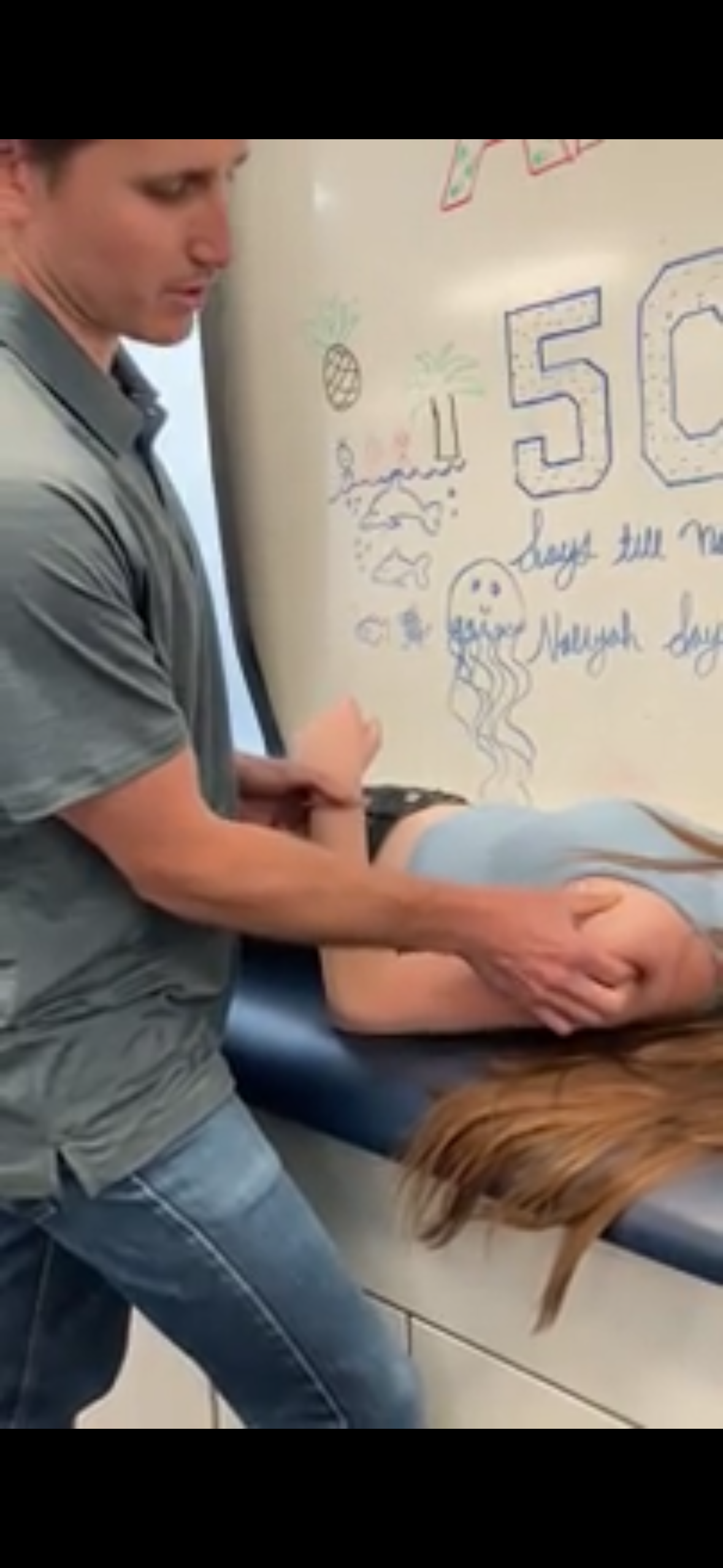
Posterior Drawer Test
A clinical test used to assess posterior stability of the glenohumeral joint by applying a posterior force to the humeral head while the shoulder is in a flexed position.
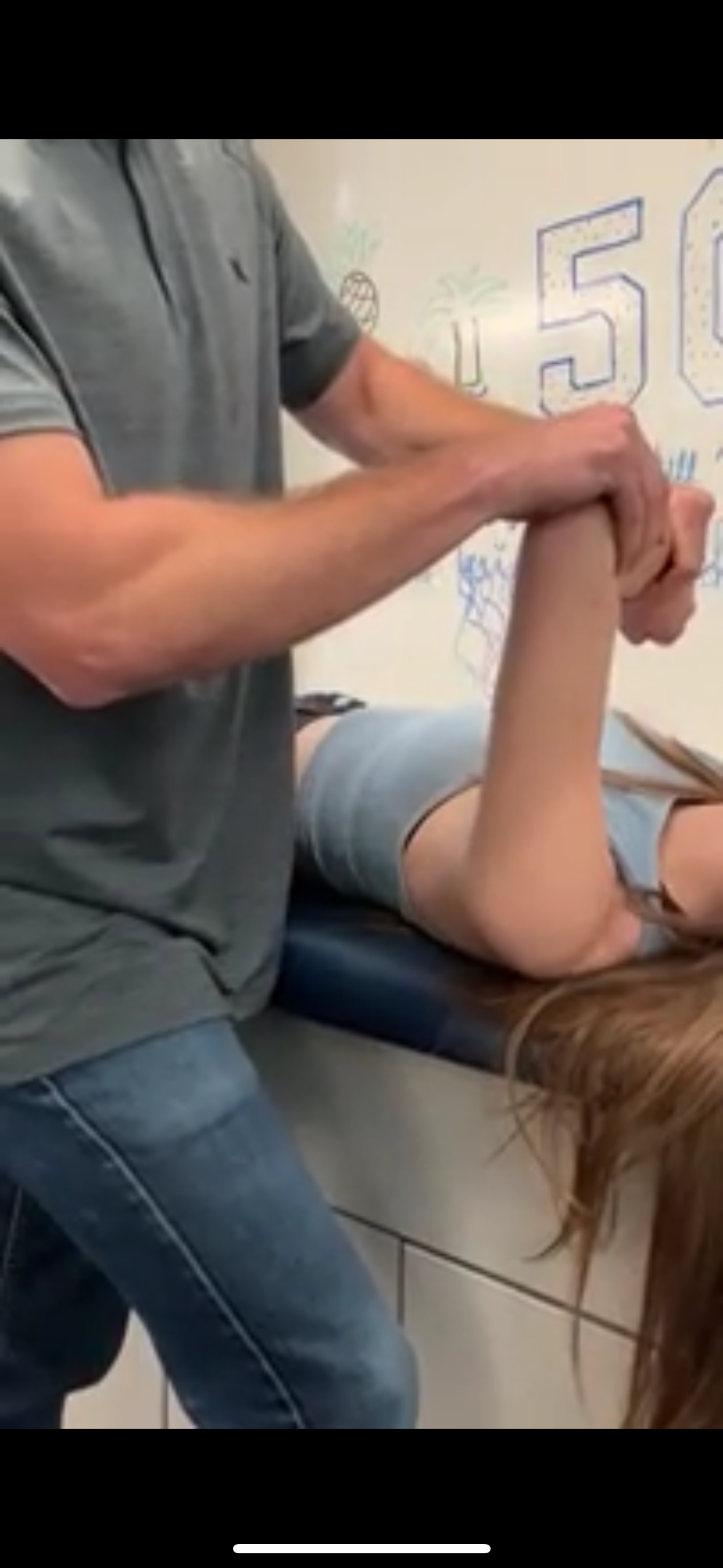
Anterior Drawer Test
A clinical test used to evaluate the anterior stability of the glenohumeral joint by applying an anterior force to the humeral head while the shoulder is in a flexed position.

Apprehension/Crank Test
A clinical test used to assess the stability of the glenohumeral joint by determining the patient's response to an apprehensive position created by external rotation and abduction of the arm. (Dislocation)

Hawkins-Kennedey Test
A clinical test used to evaluate shoulder impingement by bringing the arm into forward flexion and internal rotation while stabilizing the scapula.

Neers Test
A clinical test used to assess shoulder impingement by elevating the arm in the scapular plane while stabilizing the scapula.

O’briens Test
A clinical test used to identify shoulder labral tears and acromioclavicular joint problems by having the patient resist downward pressure on an arm placed in adduction and internal rotation. (Thumb up & down)

Sulcus Test
A special test used to assess inferior shoulder instability by applying downward traction while observing for a sulcus sign at the glenohumeral joint. (Sulk)

Clunk Test
A clinical test used to evaluate for shoulder labral tears by applying an axial load to the humerus while simultaneously moving the arm through a range of motion, often eliciting a clunking sound or sensation.

Speeds Test
A special test used to evaluate biceps tendinopathy by having the patient resist arm flexion with the elbow extended while palpating the bicipital groove. (Let it go up)

Empty Can Test
A special test used to assess supraspinatus weakness or tears by having the patient abduct the arm to 90 degrees and internally rotate the shoulder, while the examiner applies downward pressure.
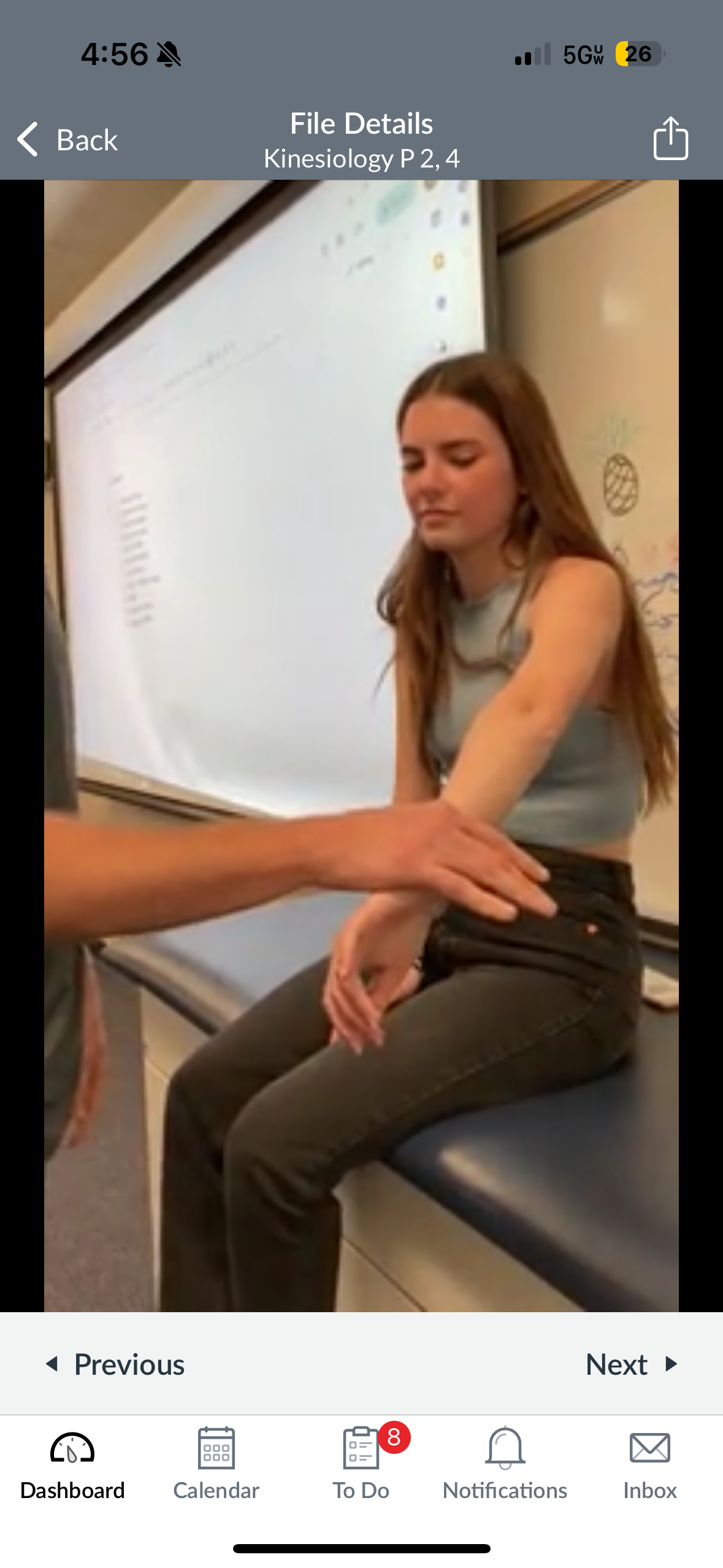
Drop Arm Test
A clinical test used to evaluate supraspinatus function by having the patient abduct the arm fully, then slowly lower it. A positive test occurs if the arm drops suddenly or cannot be lowered in a controlled manner.

Yergarsons Test
A special test used to assess biceps tendon stability by having the patient supinate the forearm against resistance while the examiner palpates the bicipital groove.
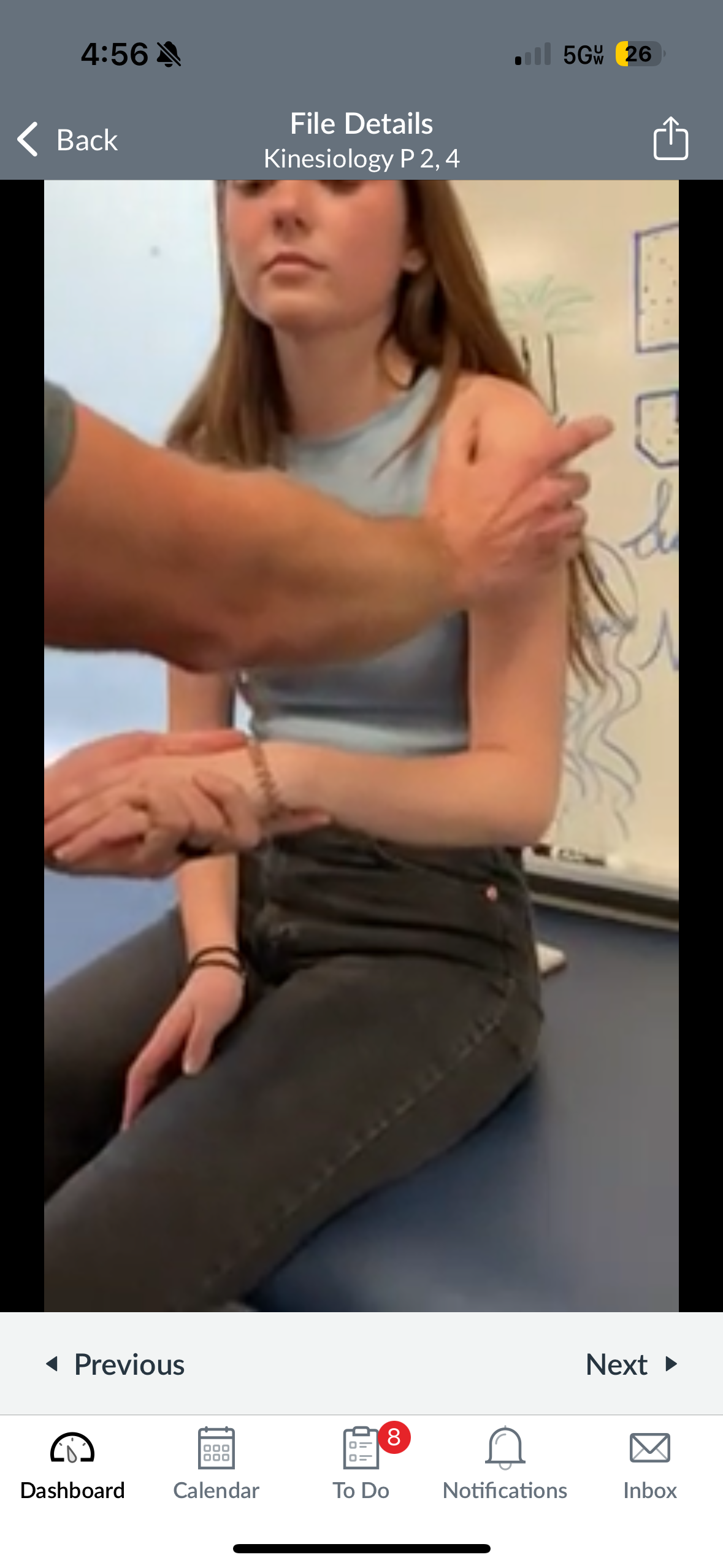
Kim & Jerk Test
A special test used to evaluate labral tears and shoulder instability, performed by applying a force to the arm while the patient is positioned at 90 degrees of abduction and external rotation.
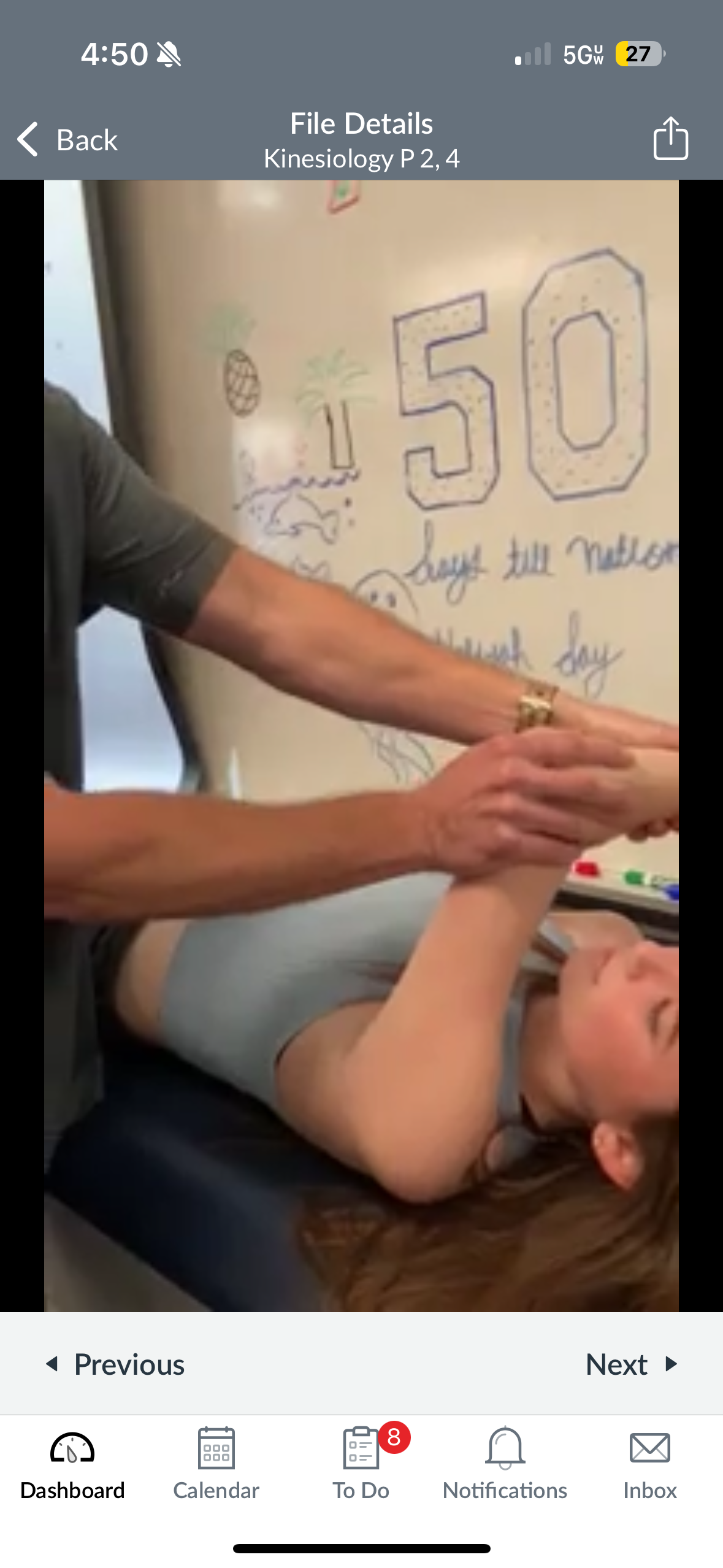
Allens Test
A test used to assess vascular supply to the arm by having the patient position their arm and turning their head to the opposite side while the examiner evaluates radial and ulnar pulse changes.

Adsons Test
A special test used to assess thoracic outlet syndrome by checking for changes in the radial pulse during arm positioning and head rotation towards the affected side.

Military Brace Test
A test used to evaluate thoracic outlet syndrome by assessing radial pulse changes when the patient assumes a military posture with arms at their sides.

Lower Trap MMT
A manual muscle test assessing strength of the lower trapezius muscle by having the patient elevate the arm towards the floor at an angle while the examiner applies resistance.
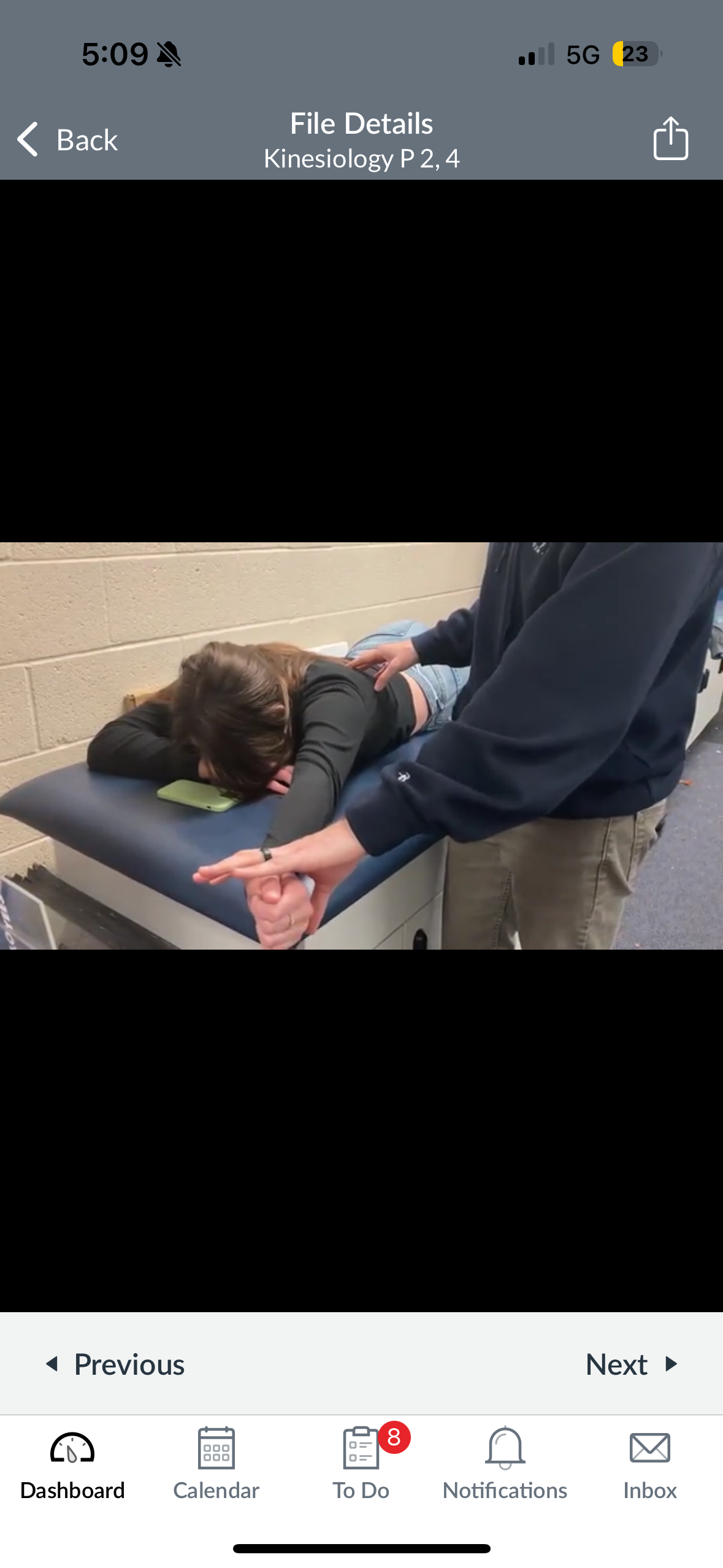
Mid Trap MMT
A manual muscle test used to evaluate the strength of the middle trapezius muscle by having the patient retract the scapula against resistance. (Thumb Up)
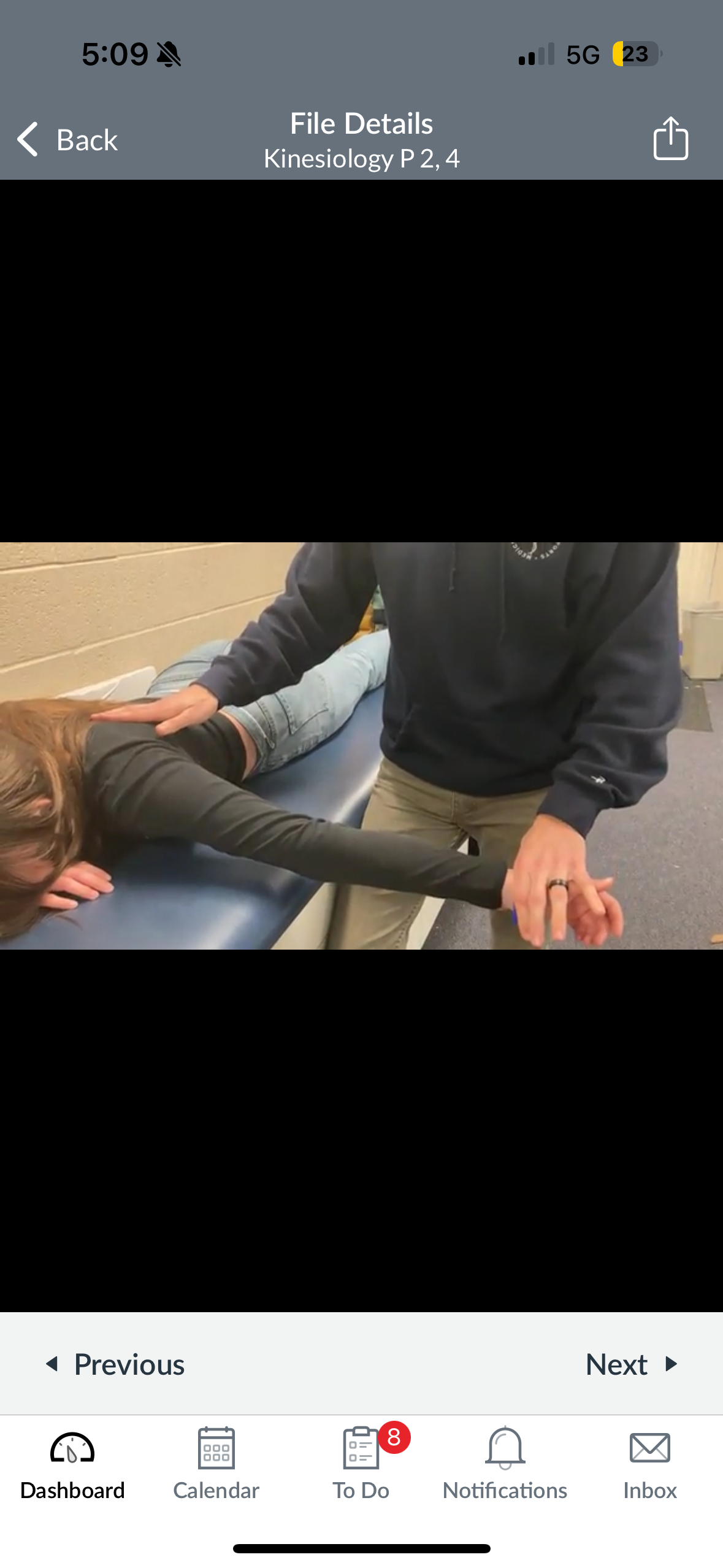
Rhomboids MMT
(Thumb down) A manual muscle test that evaluates the strength of the rhomboid muscles by having the patient retract the scapula while the examiner applies resistance.

Lats MMT
A manual muscle test that assesses the strength of the latissimus dorsi muscle by having the patient adduct and extend the arm against resistance.
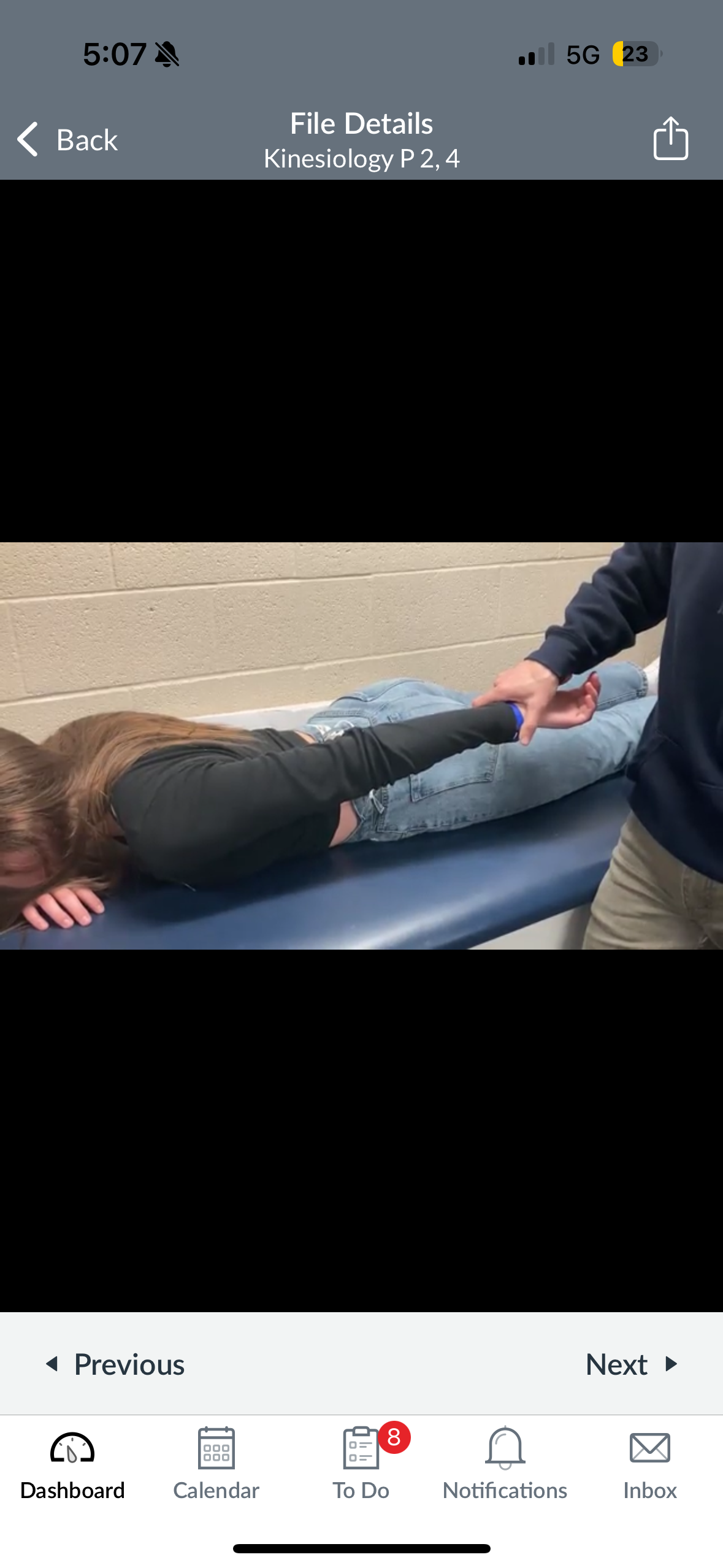
Subscapularis/Teres Major MMT
A manual muscle test that evaluates the strength of the subscapularis muscle by having the patient internally rotate the shoulder against resistance.
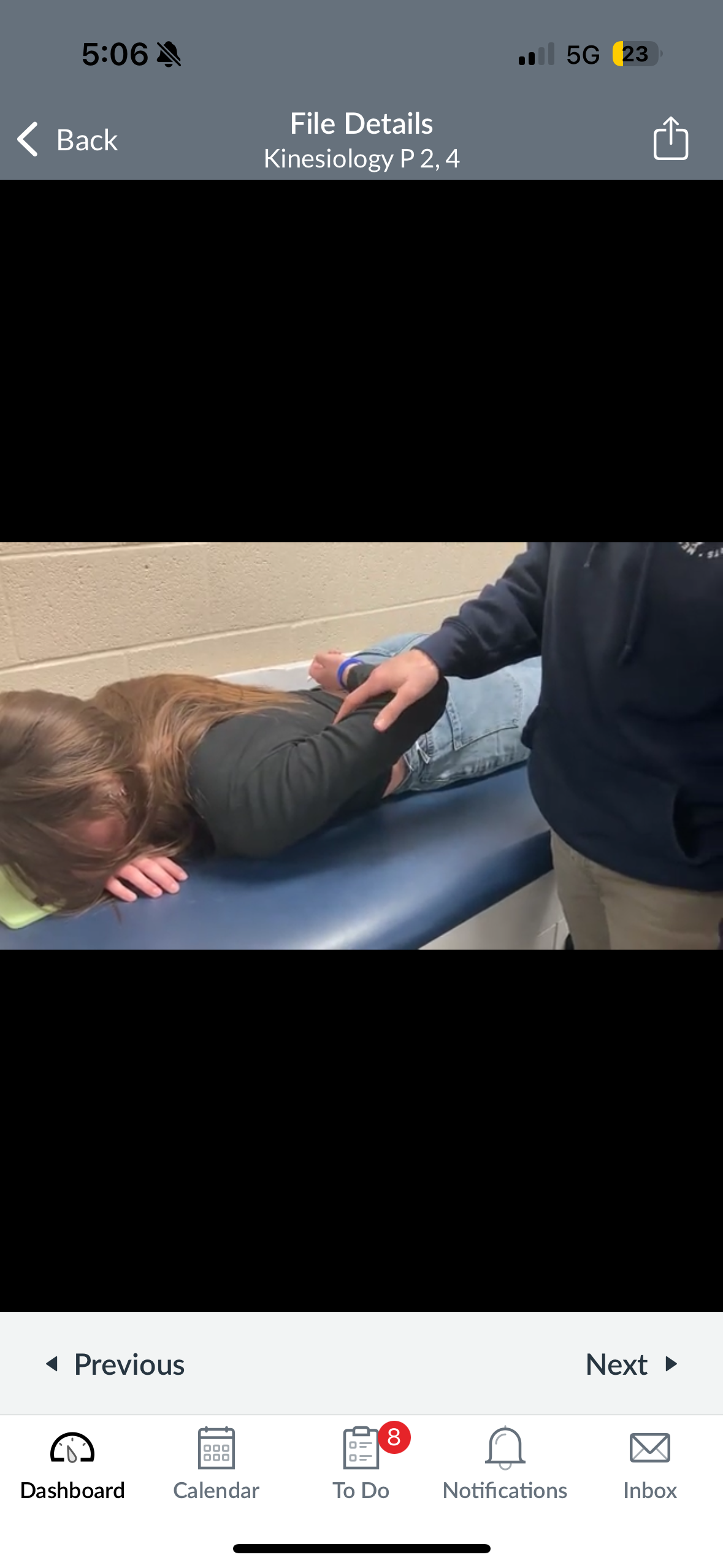
Infraspinatus MMT
A manual muscle test that assesses the strength of the infraspinatus muscle by having the patient externally rotate the shoulder against resistance.
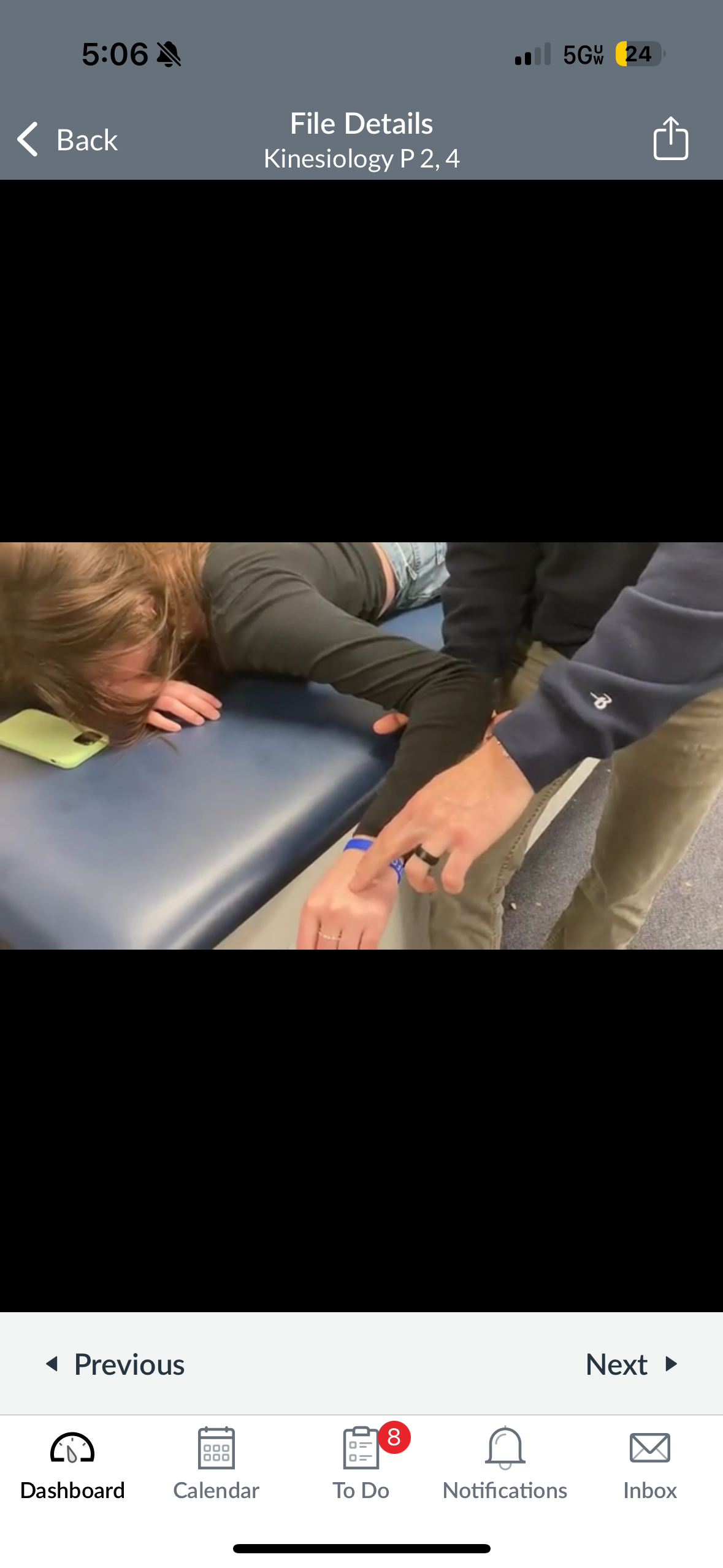
Teres Minor MMT
A manual muscle test that evaluates the strength of the teres minor muscle by having the patient externally rotate the shoulder against resistance.
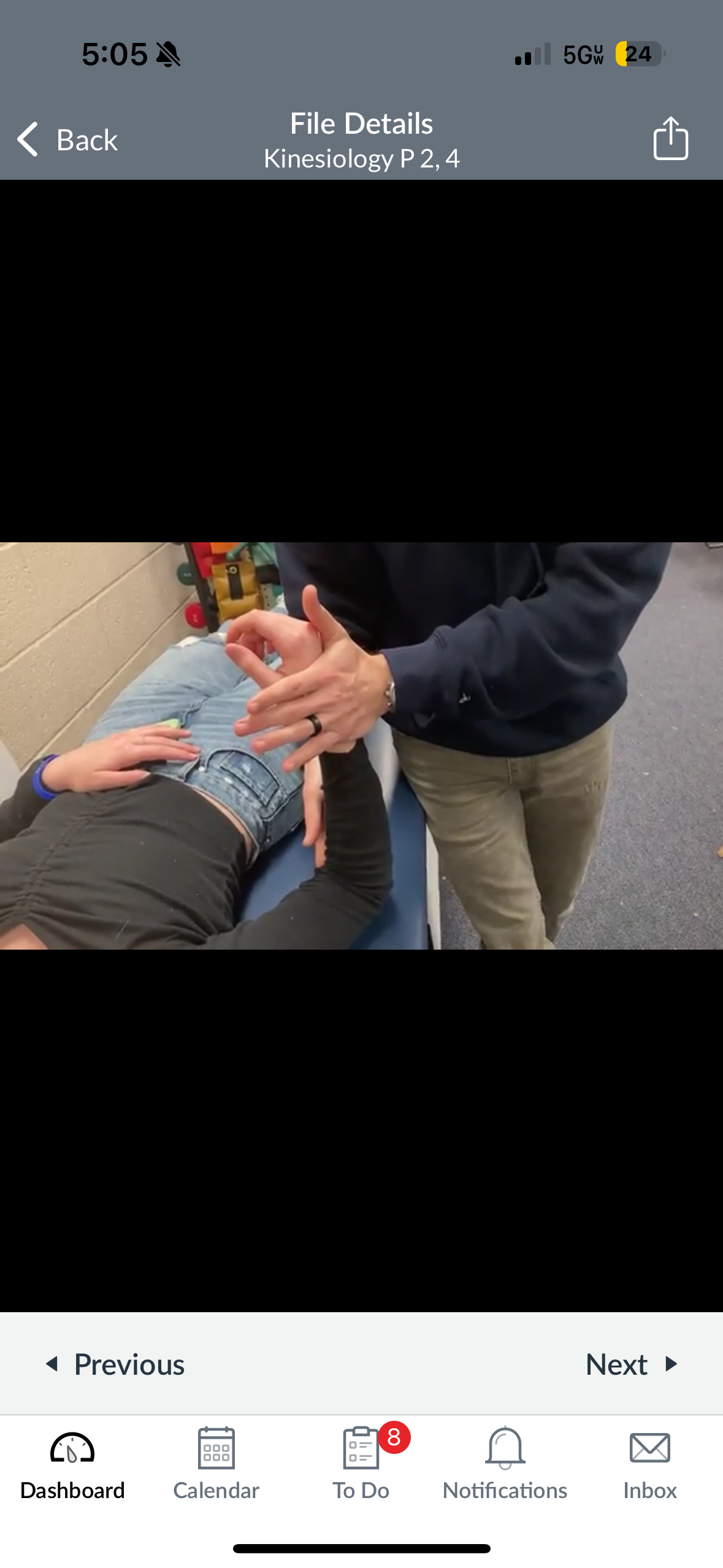
Pec Minor MMT
A manual muscle test that assesses the strength of the pectoralis minor muscle by having the patient abduct and protract the shoulder against resistance.

Pec Major MMT
A manual muscle test that evaluates the strength of the pectoralis major muscle by having the patient perform shoulder flexion, adduction, and internal rotation against resistance. (Thumb diff fibers))
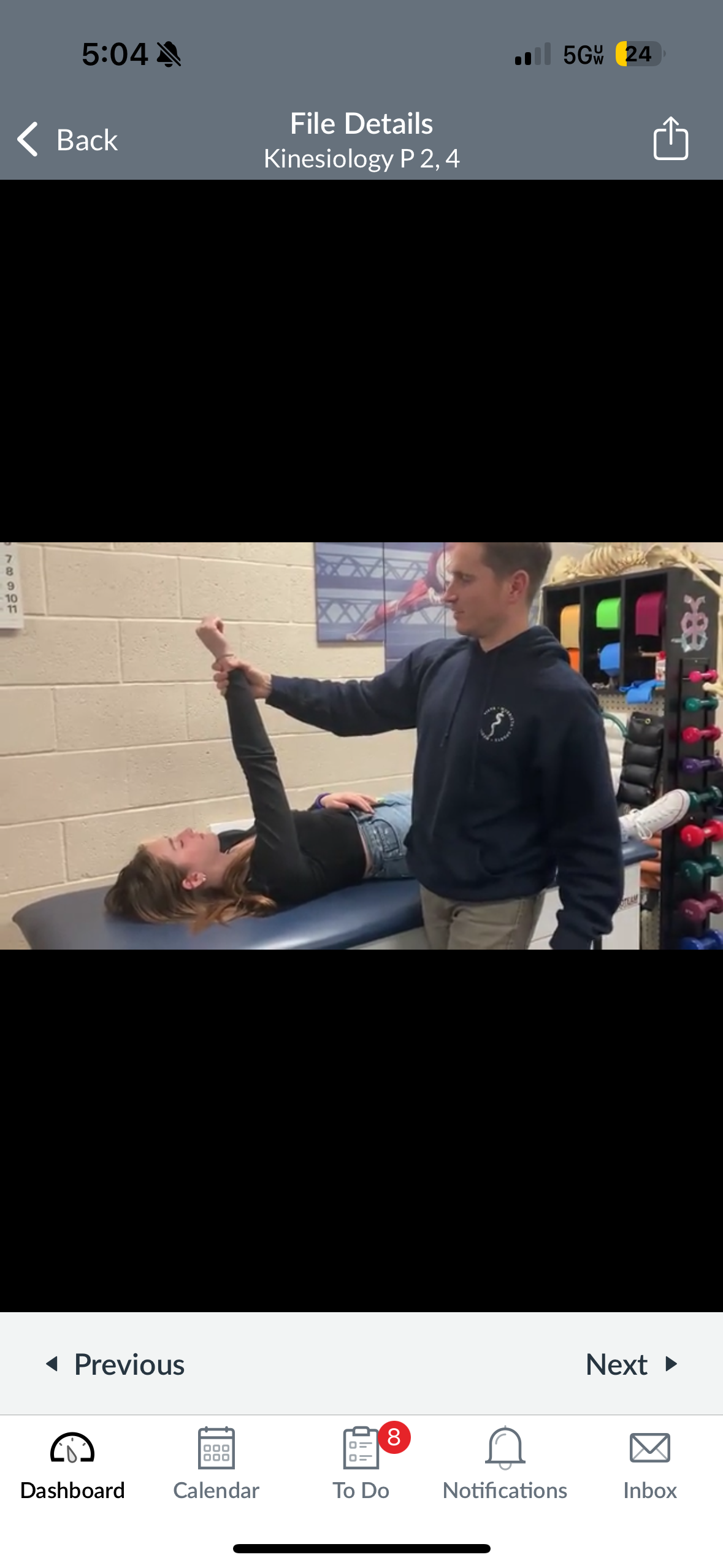
Serratus Anterior MMT
A manual muscle test that assesses the strength of the serratus anterior muscle by having the patient protract the shoulder while pushing against resistance, typically in a forward punch position.
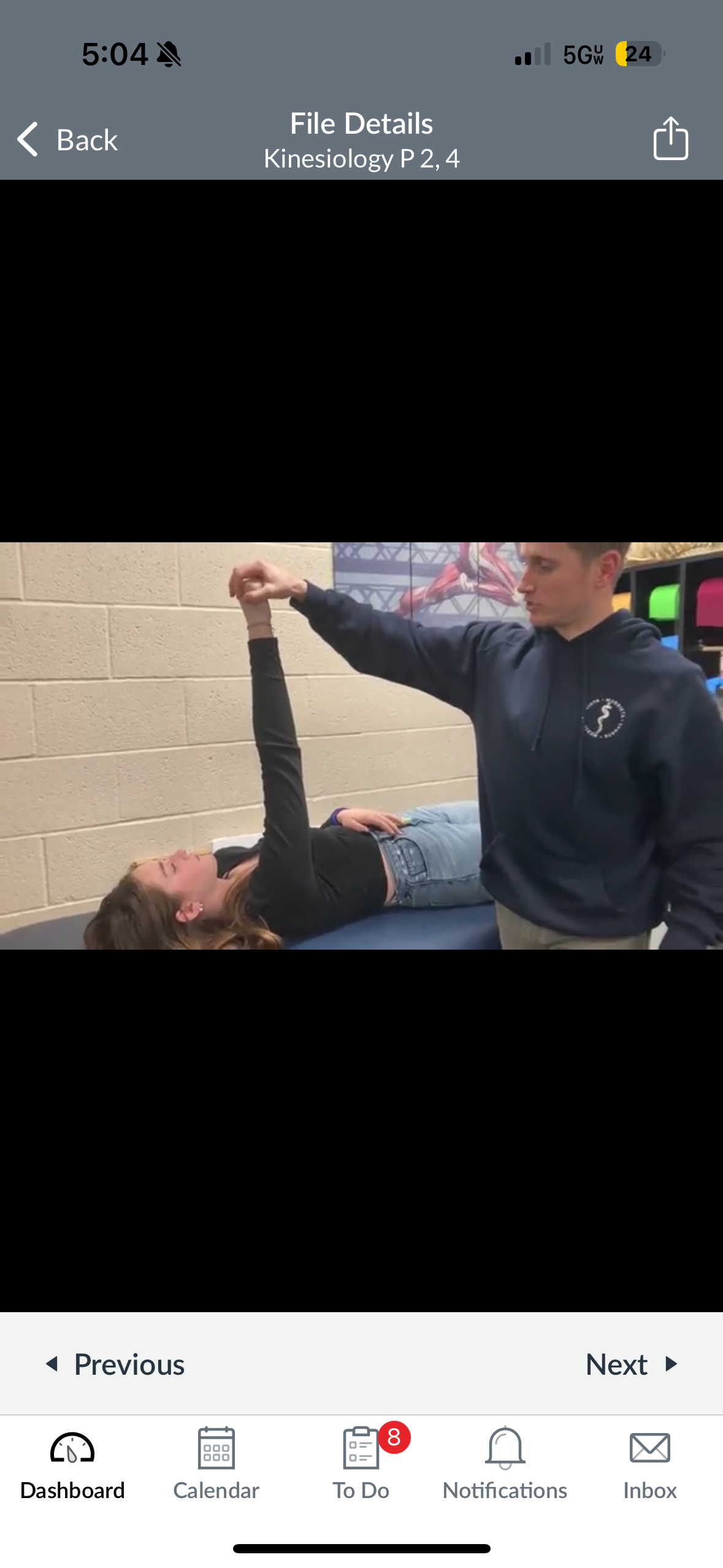
Upper Trap MMT
A manual muscle test that evaluates the strength of the upper trapezius muscle by having the patient elevate the shoulder against resistance, often performed in a shrugging position.

Supraspinatus MMT
A manual muscle test that assesses the strength of the supraspinatus muscle by having the patient abduct the arm to 90 degrees while resisting downward pressure. (Head away)

Deltoids MMT
A manual muscle test that evaluates the strength of the deltoid muscle by having the patient abduct the arm to 90 degrees against resistance, typically performed in a position with the palm facing down. (ant. mid. post.)
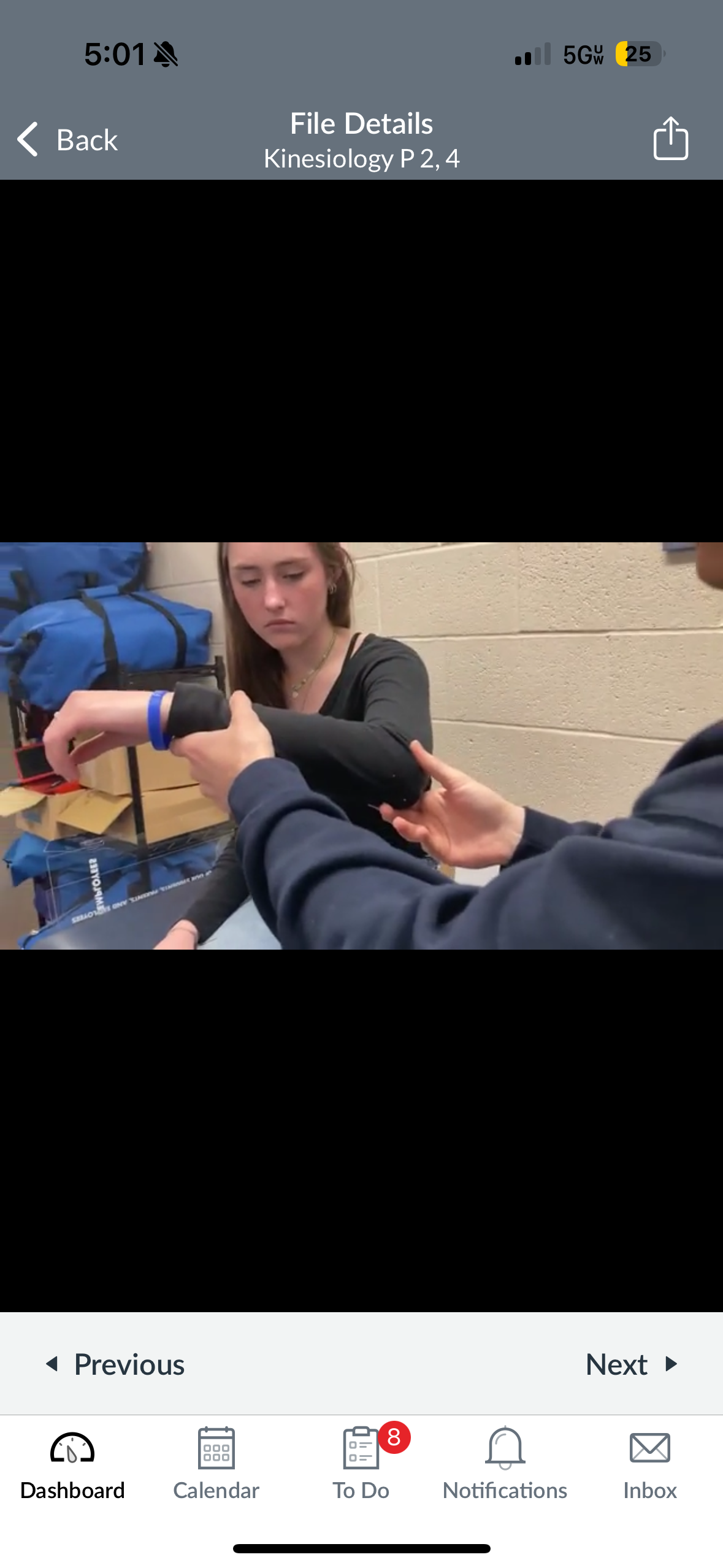
Coracobrachialis MMT
A manual muscle test that assesses the strength of the coracobrachialis muscle by having the patient flex the shoulder against resistance while in a slight abducted position.

Biceps Brachii MMT
A manual muscle test that evaluates the strength of the biceps brachii by having the patient flex the elbow against resistance, typically performed with the arm in a supinated position.
